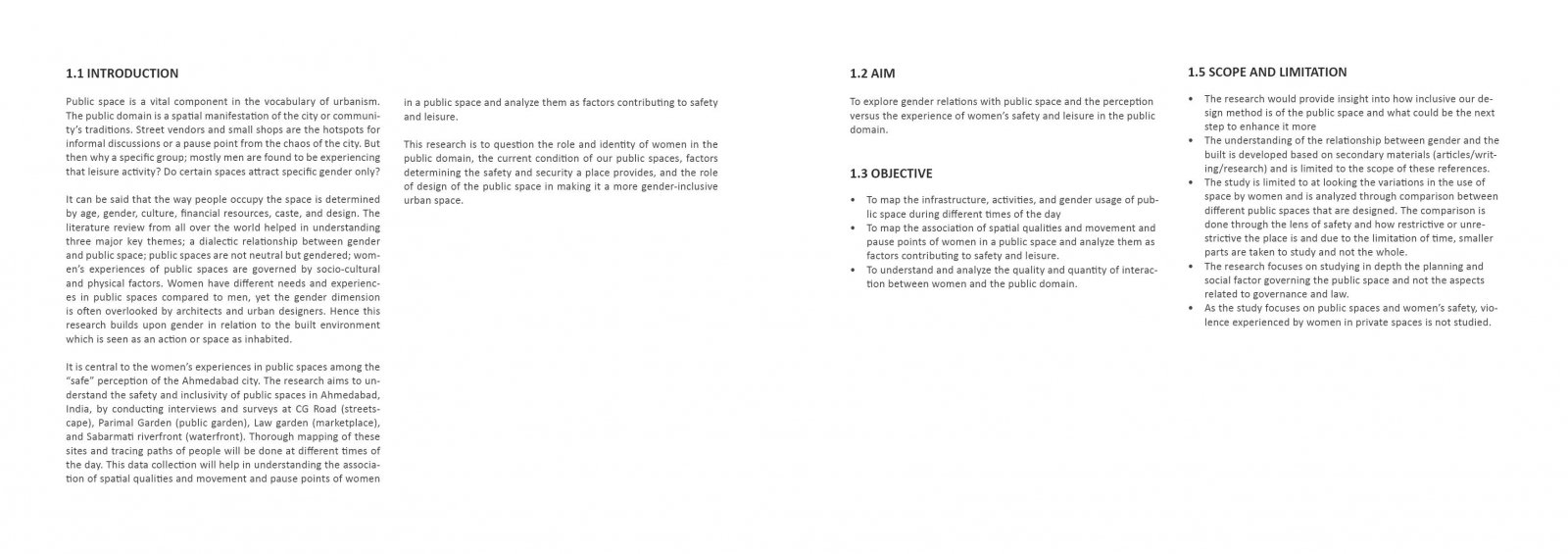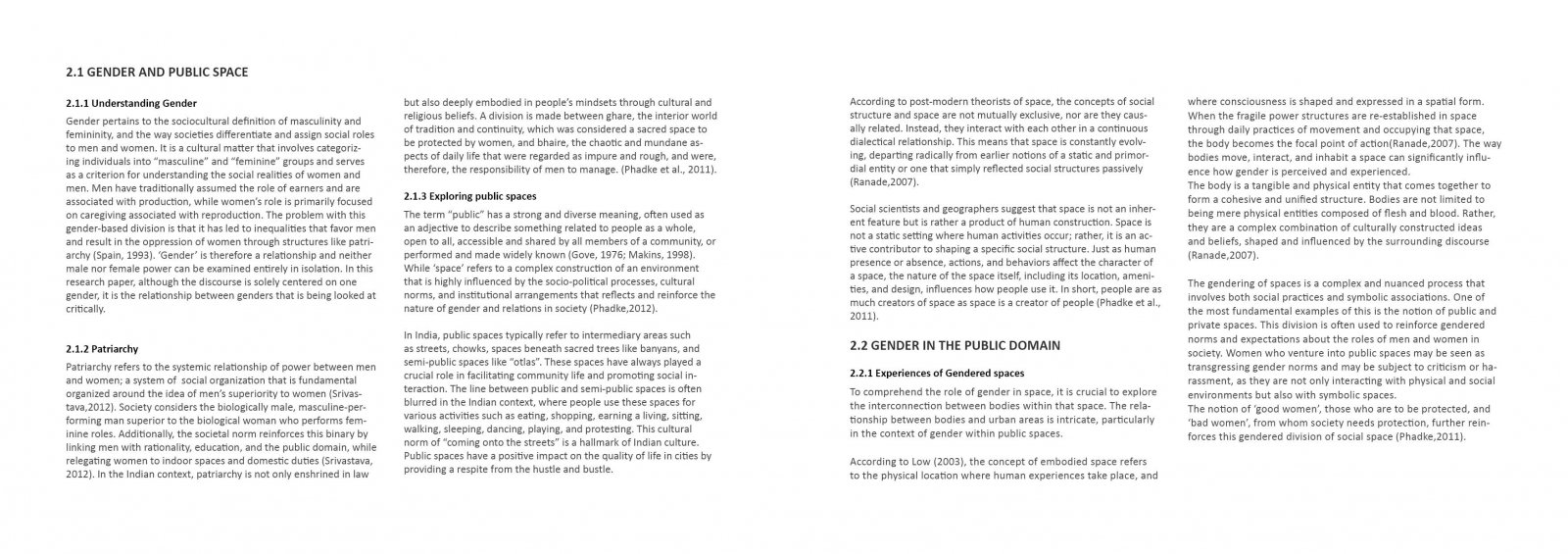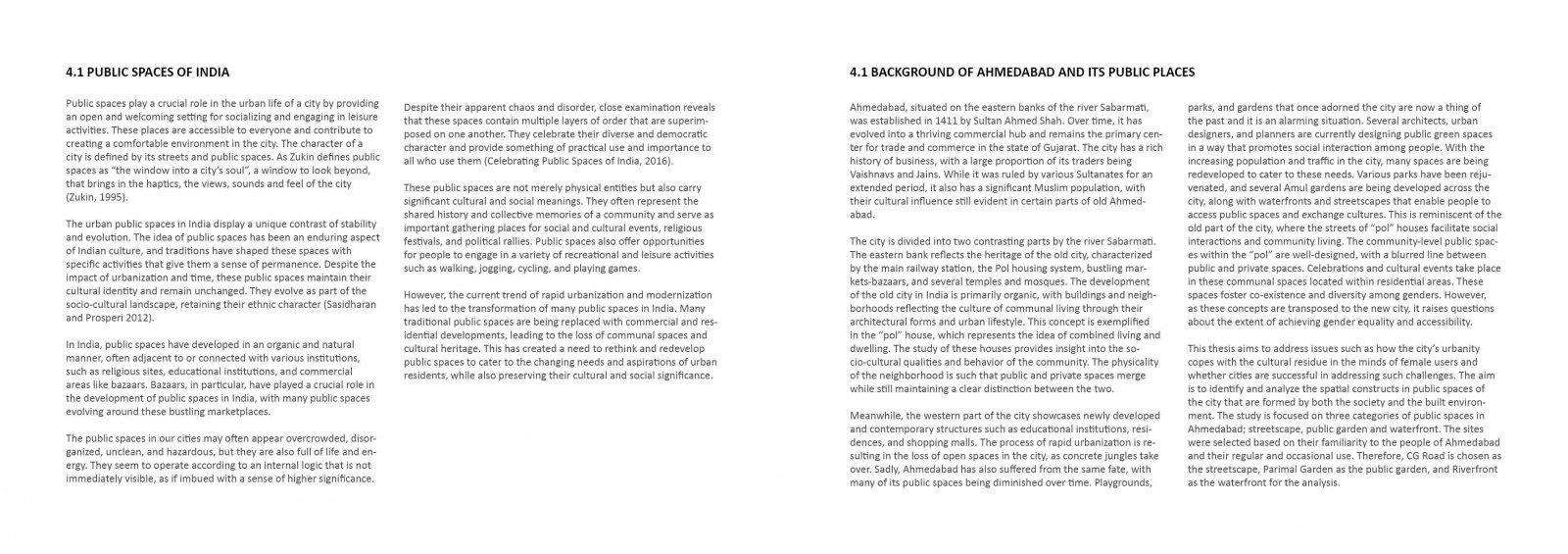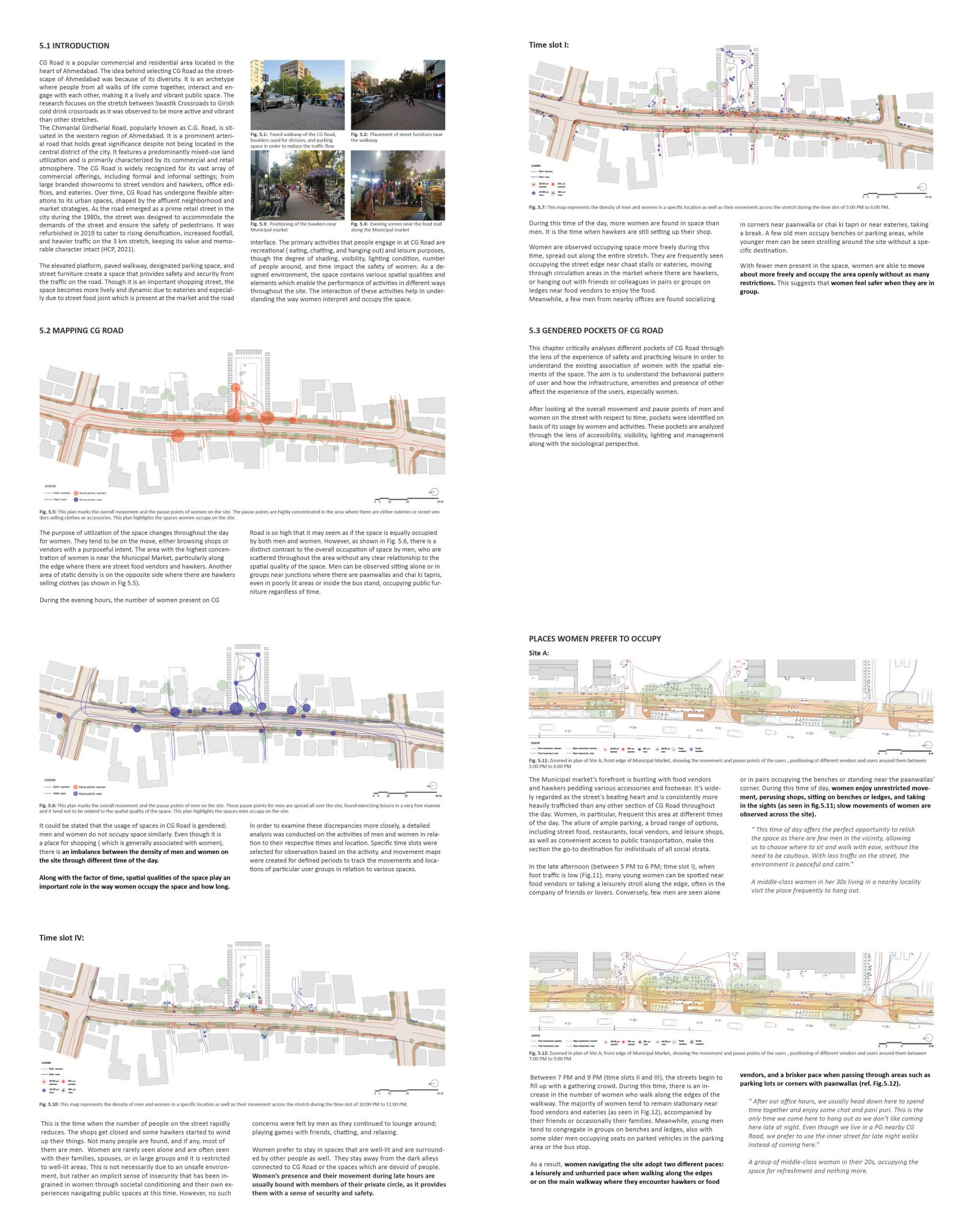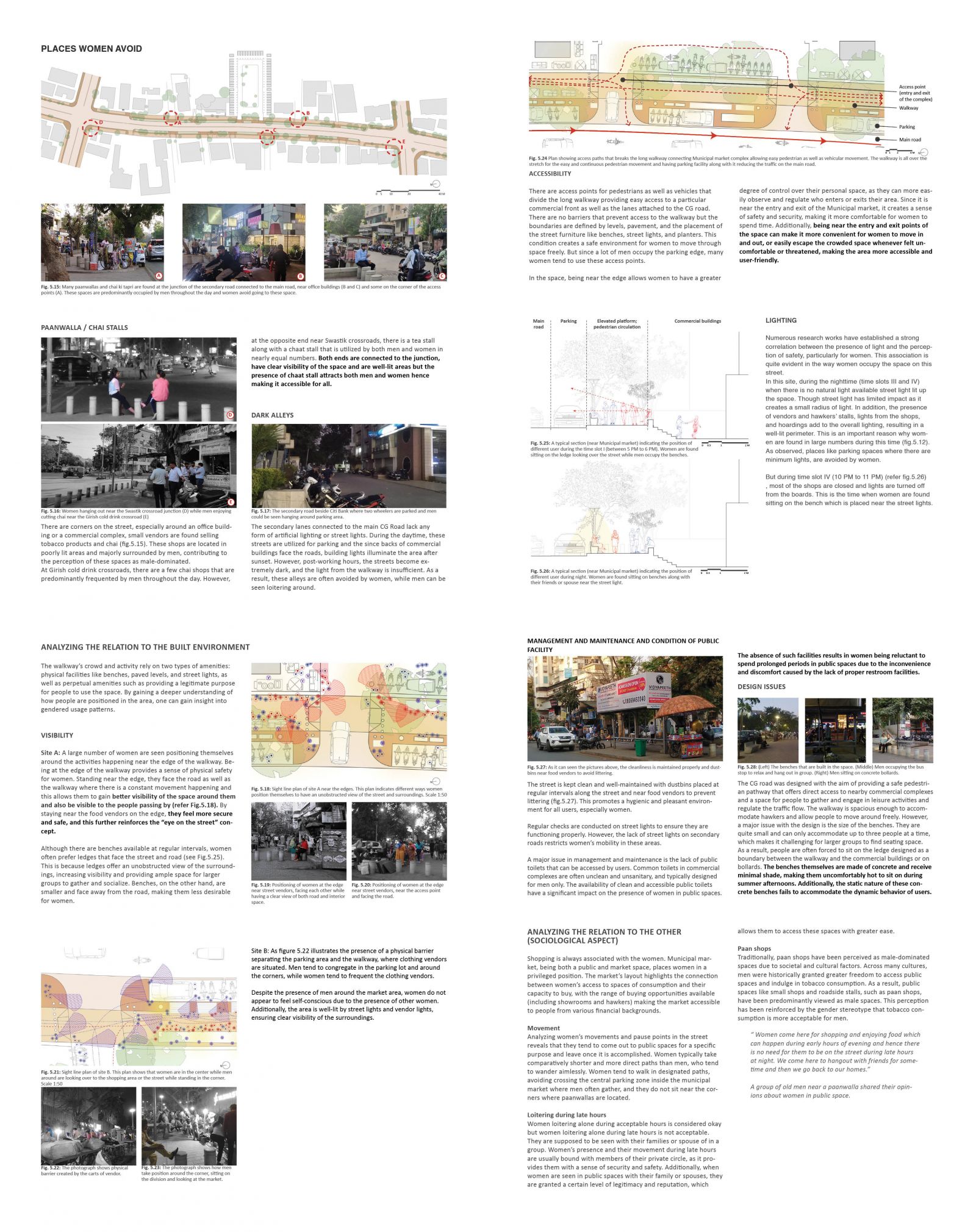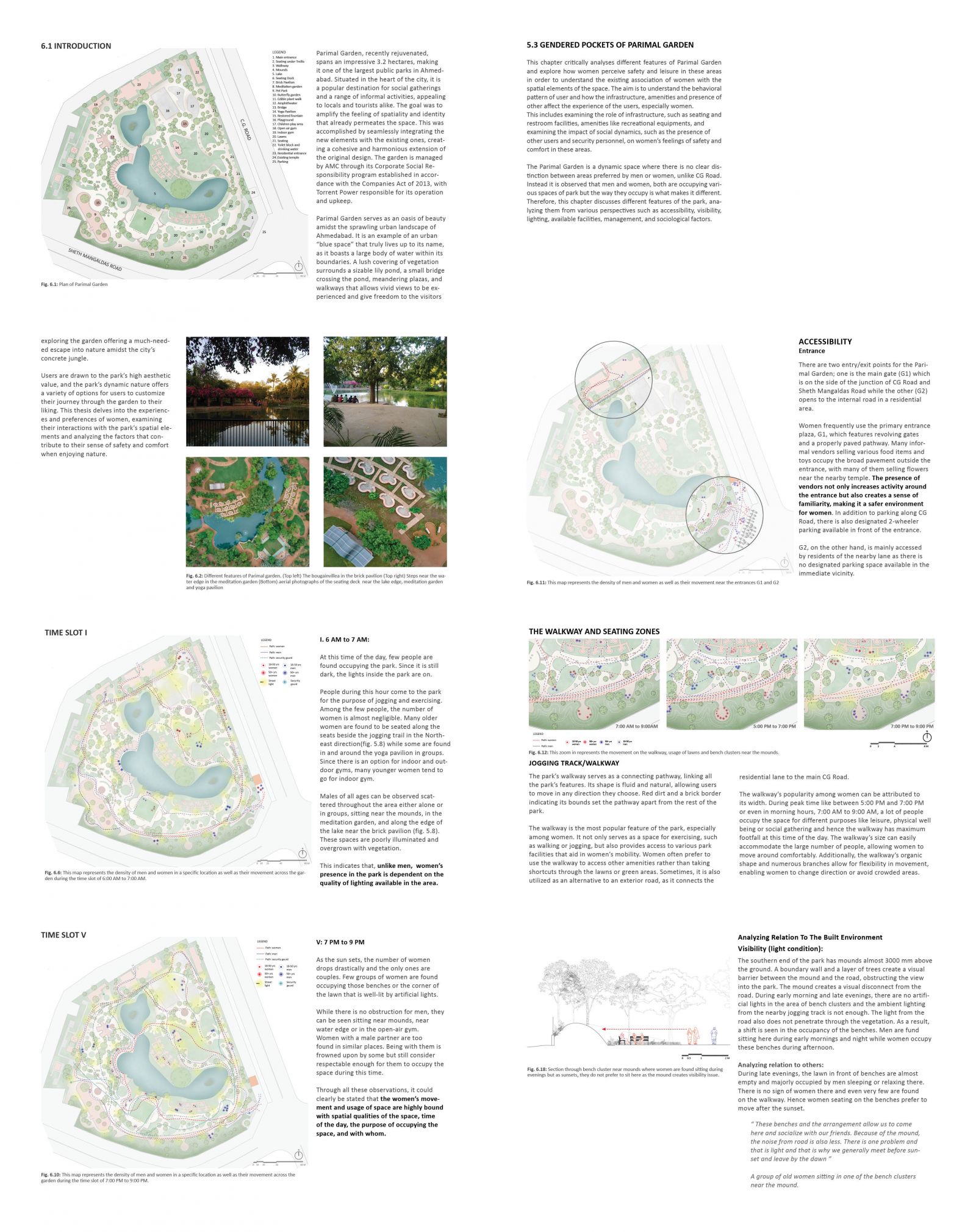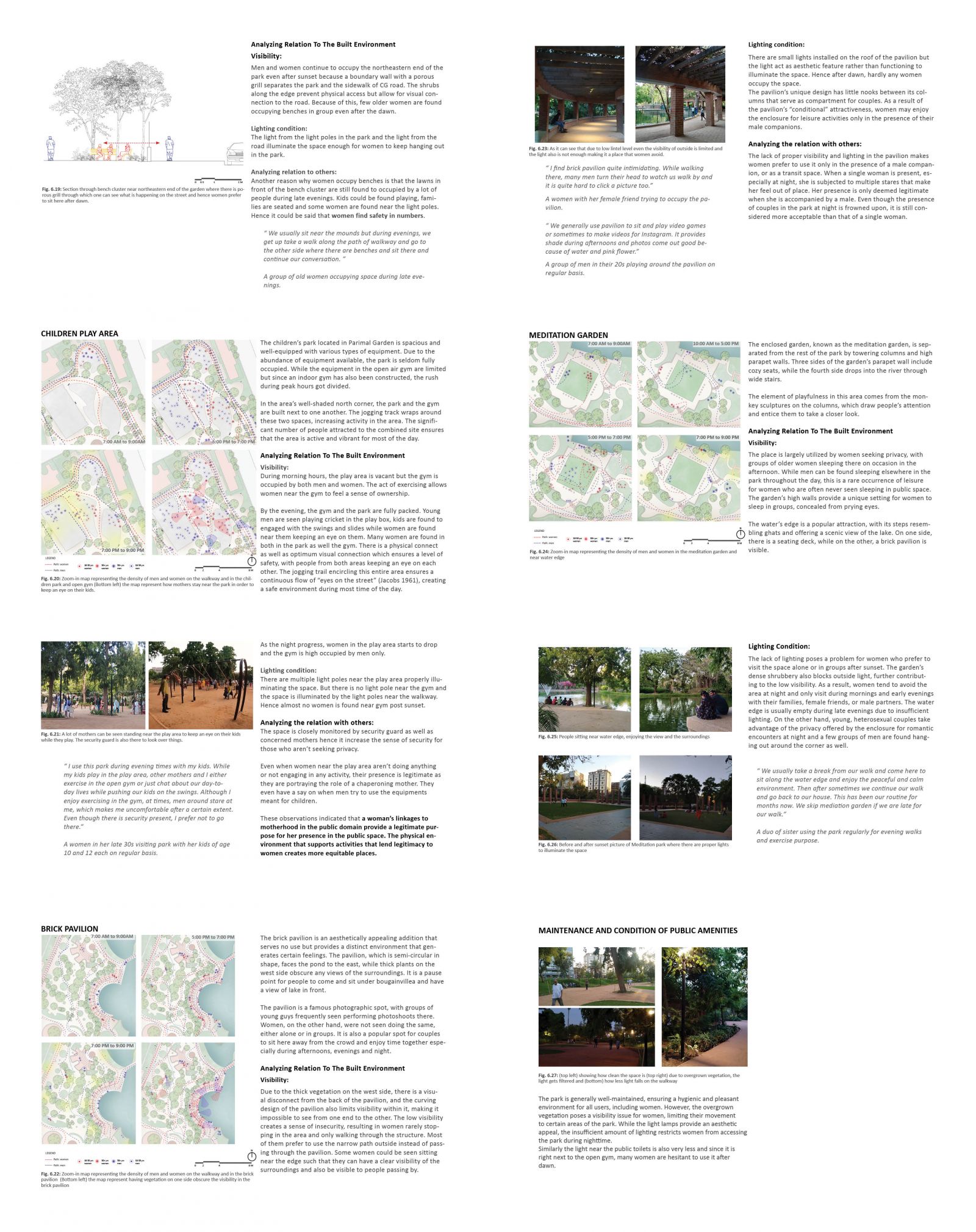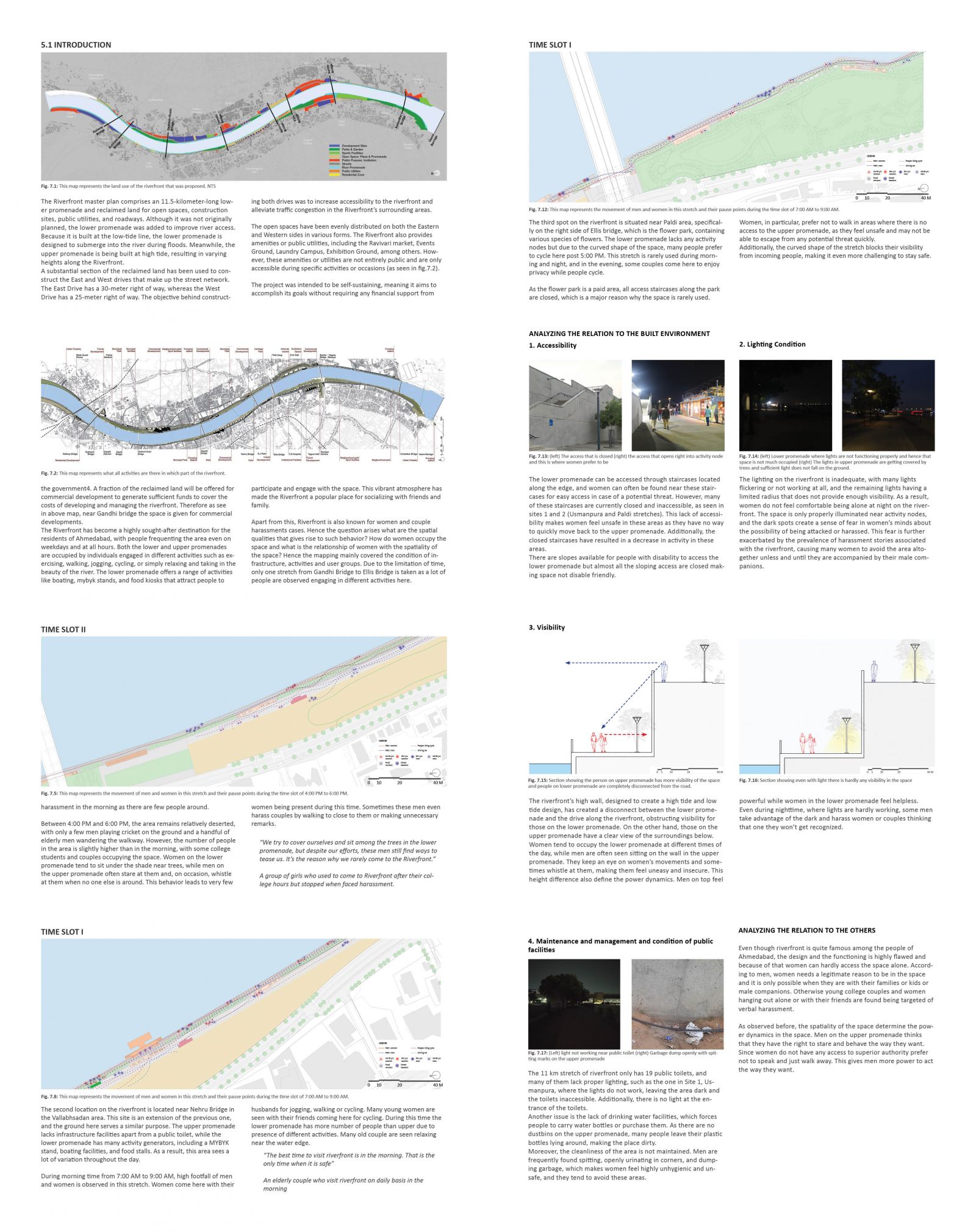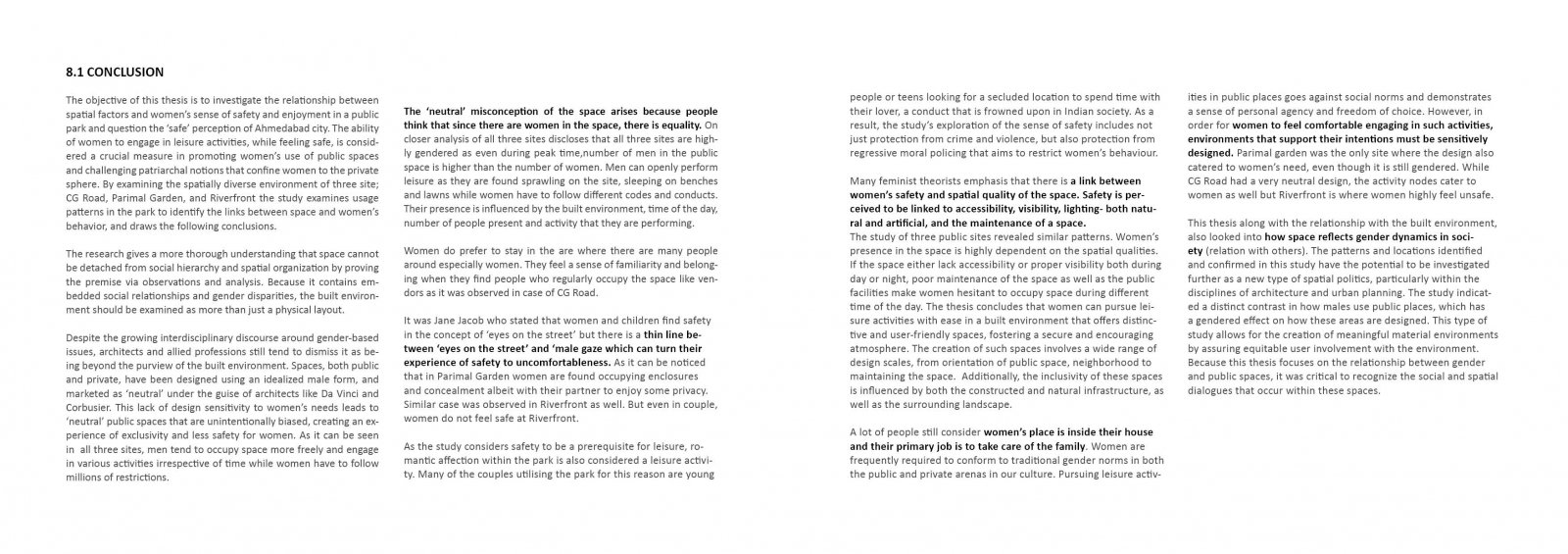Your browser is out-of-date!
For a richer surfing experience on our website, please update your browser. Update my browser now!
For a richer surfing experience on our website, please update your browser. Update my browser now!
Public space is an essential element in urbanism, reflecting a city or community's traditions. Small shops and street vendors often serve as informal gathering spots, providing a break from the chaos of the city. However, why are these leisure activities primarily enjoyed by men? Are certain spaces more attractive to a specific gender? People's use of public space is influenced by a variety of factors, including age, gender, culture, financial resources, caste, and design. Research has shown that gender and public space have a dialectic relationship and that public spaces are gendered rather than neutral. Women's experiences in public spaces are shaped by socio-cultural and physical factors, which are often overlooked by architects and urban designers. The present study aims to explore the relationship between gender and the built environment, with a focus on women's experiences in public spaces in Ahmedabad, India. By conducting surveys and interviews at various sites, including streetscapes, public gardens, marketplaces, and waterfronts, the study seeks to understand the safety and inclusivity of public spaces.
